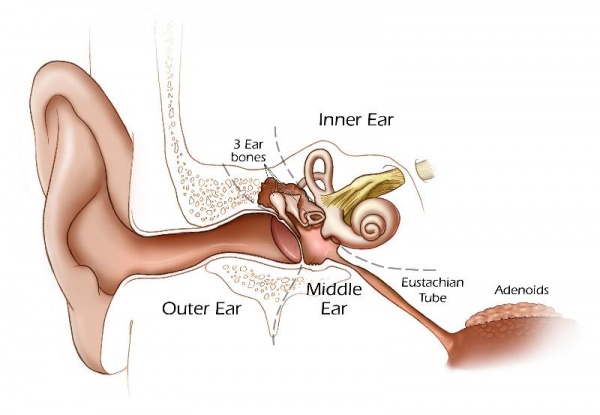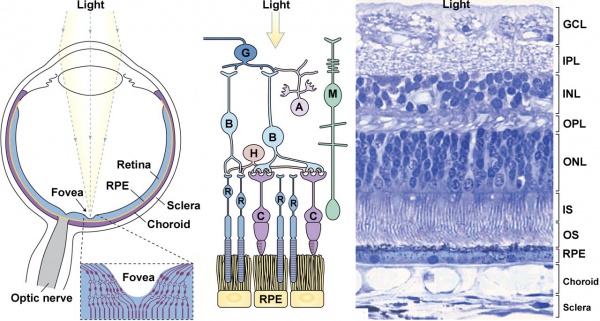K12 - Communication: Difference between revisions
| Line 23: | Line 23: | ||
This cartoon shows the adult "ear" with the 3 main divisions (outer, middle, inner). | This cartoon shows the adult "ear" with the 3 main divisions (outer, middle, inner). | ||
{| | {| | ||
| width=200px|'''Outer ear''' | | width=200px valign=top|'''Outer ear''' | ||
* directs sound waves into the ear canal. | * directs sound waves into the ear canal. | ||
| width=200px|'''Middle ear''' | | width=200px valign=top|'''Middle ear''' | ||
* converts sound waves in to mechanical movements or vibrations. | * converts sound waves in to mechanical movements or vibrations. | ||
| width=200px|'''Inner ear''' | | width=200px valign=top|'''Inner ear''' | ||
* converts mechanical movements into electrical signals. | * converts mechanical movements into electrical signals. | ||
|} | |} | ||
Revision as of 15:23, 14 March 2012
Introduction
Biological communication occurs at many levels, from one cell communication with its neighbour in a tissue (paracrine, to signals released into the blood from one cell to signal to another cell or tissue (endocrine or hormone signaling). The signalling that occurs in the brain, spinal cord and other nervous tissues involves electrical (action potentials) signaling.
This page will introduce development of signaling in our special sensory nervous systems: the eyes for vision and the ears for hearing. Both systems convert signals in one medium (light or sound) into an electrical signal that our brain can understand.
Sound - Hearing
This cartoon shows the adult "ear" with the 3 main divisions (outer, middle, inner).
Outer ear
|
Middle ear
|
Inner ear
|
Light - Vision
This cartoon[1] shows the eyeball (left), a cartoon of the retinal cell organisation (middle) and an actual slice of the human retina.
The Eye
|
Retinal Cell Organization
These are the names of the cells and neurones required to convert light into electrical signals. (detect, process and carry)
Notice that light has to pass through all the other cell layers to the detection cell layer. |
Glossary Links
- Glossary: A | B | C | D | E | F | G | H | I | J | K | L | M | N | O | P | Q | R | S | T | U | V | W | X | Y | Z | Numbers | Symbols | Term Link
Cite this page: Hill, M.A. (2024, April 18) Embryology K12 - Communication. Retrieved from https://embryology.med.unsw.edu.au/embryology/index.php/K12_-_Communication
- © Dr Mark Hill 2024, UNSW Embryology ISBN: 978 0 7334 2609 4 - UNSW CRICOS Provider Code No. 00098G
- ↑ <pubmed>20855501</pubmed>| PMC3101587 | JCB

